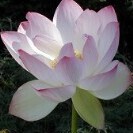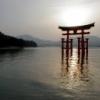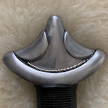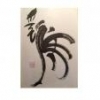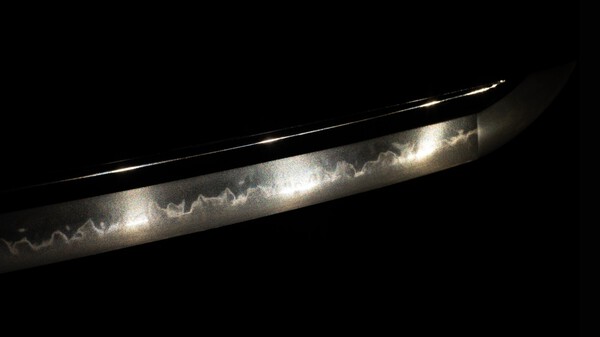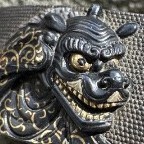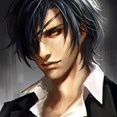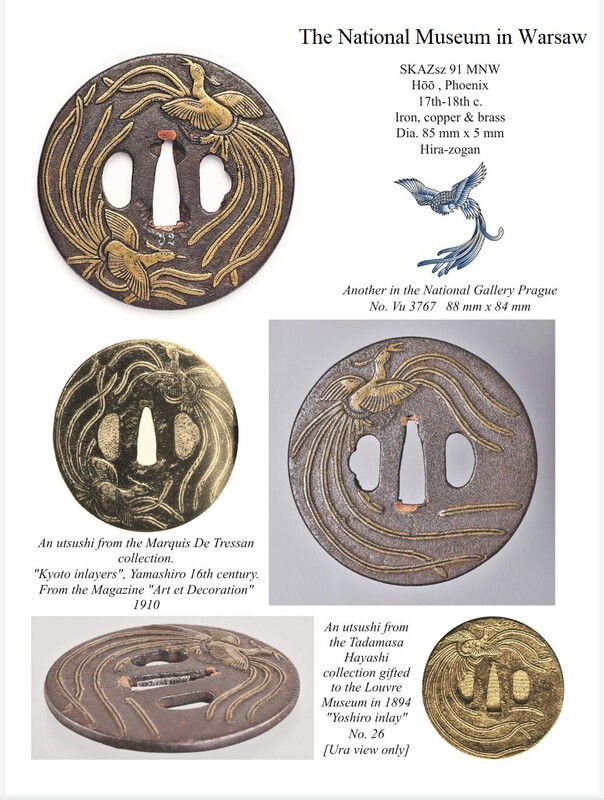Leaderboard
Popular Content
Showing content with the highest reputation since 04/03/2025 in all areas
-
There are questions about collecting that come up (or worse do not come up but are present) which are, unfortunately, not covered in any of the books. So I wrote a guide which answers at least some of them: papers, polish, etc.. It is a directly phrased document which I am planning to put it in my signature since unfortunately I don't have time anymore to manage my website. cert.pdf30 points
-
13 points
-
Hi everyone. I have been away from the hobby and this forum or a long time, and by accident bumped into the news that Ford had passed last year. That certainly did not do my mood any favors. I've seen his Utsushi-video so many times and often watch it when I want just to chill out and see something beautiful. While downbeat from the news, I opened my cabinet and took out one of his tsuba, an early piece. I will leave it here if someone is making a catalogue of his works, and for general appreciation. The theme is a flamingo and its wing. It feels a bit out of place just lying in my inactive collection, so if you need measurements or more photos let me know.12 points
-
There has been solid advice there above by every member. My love in Japanese swords are ōdachi and big naginata. However even after all the years of focusing on them I still think it can often be very difficult to say how much a sword has been altered. Sometimes it is easy to say that a sword has been shortened or it has been shaved down from the top part. However there are times when I often am left scratching my head when trying to figure out the original shape of the item. The tricky thing is that there are lots of variations in naginata. In order to fully understand the variations and their specific features you will need to devote quite a bit of time into researching naginata. However people in general do not appreciate them, and common reference books do not have info on them, as they are not thought highly of in Japanese sword appreciation circle. Some forms of naginata require quite extreme measures to be cut down to be used as sword (sometimes it might not even be feasible) while some forms require very little adjusting. Here I present 2 items by Dewa Daijō Kunimichi (an excellent smith), both items are Tokubetsu Hozon. Left one has been judged as wakizashi by NBTHK, I think originally it was similar to the polearm on the right. The picture is in scale, I just photoshopped the items side by side for my own fun. Of course I might be wrong in my assumption but I am fairly confident in my belief on this particular piece. I think not many might have seen this type of naginata blade before, as this variation is bit different compared to more common surviving intact naginata.12 points
-
Dear All The NMB (via great efforts from @Brian) have been given permission to share the Bushido Magazines. Since we have the opportunity I will place the WeTransfer links here and anyone can download them, I will keep the links infinite without expiry till Brian can place them in the downloads section for everyone to enjoy and learn from. Bushido Magazines link: https://we.tl/t-YfdWhQTQA1 Aprox 500MB Thanks to Brian and Bob Benson, I hope the community appreciates this11 points
-
I do think Jacques does have a good point, and what he says is true in general. Of course I do think Jacques often is very extreme in his views and I tend to think there is a lot of grey area. When talking about naginata I personally include all the bladed single edged polearms into this. I think the more terminology we add in the more complicated it can get. I have followed some discussions about details in blades and it often seems people understand the things differently. Just want to point this out that when I talk and about naginata this is what I mean. Of course it is also very thin line between some ōdachi types and naginata. You can see some very large flaring of the tip on the Tadatsuna naginata Jacques presented and the Sukesada naginata that me & Piers posted. Personally I am not a big fan of that naginata blade style. However it is of course a historical blade style proven to be effective as it has been used for long time. Remodeling naginata of this style would be tricky as Jacques has explained. Now I spent probably close to 2 hours creating this following image. This has 10 different naginata from Kamakura & Nanbokuchō periods, with 1 75 cm tachi by Awataguchi Kuniyoshi and 70 cm katana by Hizen Tadahiro as reference items to show how massive some of these polearms are. I have seen 5 of the naginata in this picture (marked with X) and the true size of the big ones if difficult to explain in picture. The original image I have is about 21MB so I downsized this one. I was counting the scaling roughly by pixels, it is not 100% correct but I would say something like at least 90% accurate. 1. 51,5 cm - Kagemitsu (1322) (Tokyo National Museum) X 2. 52,4 cm - Norishige (1325) (Ōyamazumi Jinja) X 3. 95,7 cm - Katayama Ichimonji (Uesugi Jinja) 4. 75,5 cm - Awataguchi Kuniyoshi tachi (TJ 15) 5. 83,1 cm - Shikkake (TJ 26) (Jacques posted this earlier) 6. 42,8 cm - Ryō Hisanobu (1308) (Tokugawa Art Museum) 7. 80,6 cm - Hōjōji (Ōtaki Castle Museum) [this one actually has 131 cm tang but I have not got a picture anywhere that would show it in full length] 8. 70,5 cm - Hizen Tadahiro Katana (TJ 14) 9. 98,0 cm - Kanemitsu or Yoshimitsu (Futarasan Jinja) X 10. 80,1 cm - By legend Tomoe Gozen naginata, in reality Nanbokuchō naginata (Ōyamazumi Jinja) X [nakago was cut off a bit in photo] 11. 44,2 cm - Nagamitsu (Sano Art Museum) 12. 101,4 cm - By legend Benkei naginata, in reality Kamakura - Nanbokuchō naginata (Ōyamazumi Jinja) X [Nakago was cut off in photo]11 points
-
11 points
-
The show seemed to go very well. Thanks to the NBTHK-AB The Otsuki fittings exhibit was excellent, a chance to see treasures in person, with experts there to explain and answer questions, much better that books. Matt Jarrell's presentation on the changing shape of blades was a chance to learn and hold great blades from the past 1000 years. The tariff uncertainty was a negative but i was surprised to see attendance on Saturday was the most we have ever had (even shinsa years). I get a bit busy with show details but managed a few pictures when things were slow. Thanks for the support See you next year10 points
-
Hello All In this thread I will be dropping random Oshigata and their translations by @Markus Sesko (having taken his permission of course). I would like to thank Markus for his gracious permission. Those that know how valuable his work is and his willingness to always translate the documents we seek to have their secrets revealed. Thank you for everything Markus as always. The first will be a sword that has had quite the journey: Presenting Tokubetsu Juyo Aoe with translations for the Juyo and the TJ side by side. This sword went from Hozon- THozon- Juyo and TJ. The various translations shed interesting light on how the NBTHK approached this sword at 2 levels. Happy to discuss. Aoe Juyo paper-1.pdf Aoe Juyo Zufu paper-2.pdf Aoe Sayagaki.pdf Aoe Tokuju Paper (1).pdf Aoe Tokuju Zufu.pdf10 points
-
10 points
-
Just did an English translation of FRANÇOIS PONCETTON's book "LES GARDES DE SABRE JAPONAISES." Published in Paris by Albert Morance, 1924. With a few more modern images and a lot more descriptions and provenance. Around a hundred pages - images alongside the descriptions unlike the original book that had a series of plates at the back of the book. You can find the original French PDF here - https://www.tobunken.go.jp/archives/PDF/library-books/9000AB4950.pdf It is a very large 178 MB.9 points
-
I primarily collect sword-makers tsuba. The aim being to own work by sword-makers whose blades I would otherwise not be able to afford. The only boundaries are age, health and pocket book. I suppose I am the soul of my collection. I have two pieces at the heart of my collection of which I am very proud; a Juyo Bizen Morisuke tachi that is ubu signed and dated to 1335, and a juyo tosogu daisho set of tsuba by Chikanori custom made by order of Mito Rekko. More than this I cannot hope for so am very content with what I have achieved thus far...9 points
-
It has been many years but I think there is a disconnect in information and important translated information that is held quietly between a select few. I am one of those guilty parties, if @Brian was open to it i would very much like to pass all my translated Juyo documents, edo period documents and many other acquired articles for him to post on the site but we are talking many gigabytes of data... no idea how to make that work and there is a time consuming element to it. @Brian let me know.9 points
-
9 points
-
9 points
-
8 points
-
It was many years ago, and I am sure I have missed a bit of meaning with my poor memory, but at a Chicago Show presentation of blades, Bob Benson once said something like “a smith had to put extra care into making a tanto because you can see the quality or flaws all in a single glance. A long blade may vary a bit along its length, but a tanto must be perfect.”8 points
-
All, So just to re-cap the show. As always, Mark and crew put on a WONDERFUL show. Great seeing old friends/acquaintances, shaking hands, sharing new acquisitions, and just catching up a bit. Unfortunately, as I age, leaning over the table and looking down at items can take its toll on the old back… but it is a risk I am willing to take! The presentations on Saturday were top notch and we got to look at/hold fittings and blades that may rarely come around again. Matt Jarrell’s presentation highlighting the change in shape of swords over time was very informative. You know that ‘pictorial chart’ in books of blades showing that information? Well, you got to look at and hold that chart in person! From Heian to Shinshinto. How many opportunities like that come along? It was mentioned that some of the fittings from that presentation may be posted on-line for viewing, but I will have to let those associated with that comment. Please… if you have the opportunity to go to this show or any others in the future, make every attempt. You will NOT be disappointed and they really need our support. Once again, thank you to Mark and all!8 points
-
8 points
-
Not a collector? Really not? Don't you collect knowledge, and perhaps literature too? I don't mean that in a bad way. I simply ask myself whether it is not simply an oppositional attitude towards the owners of many swords to say that you are not a collector because you “only” study the subject matter. Of course, someone who is only interested in knowledge and not in the physical possession of the objects being studied is not a collector in the traditional sense. But the student who owns nothing must be aware that he cannot exist without being a collector in the conventional sense. He is dependent on being able to study the objects in the possession of a traditional collector or the collection of a museum in order to increase his knowledge. Conversely, the traditional collector with less knowledge may also be dependent on the knowledge of the student in order to better assess his collection. So there is a symbiosis from which everyone can benefit! Nobody is better or worse because they have more or less, or know more or less. The famous collector's disease “emotions” affects the conventional collector just as much as the collector of knowledge. Emotions are basically a good thing, otherwise we would all be zombies. But greed, envy, impatience, superficiality and arrogance cloud our vision and impair our judgment. You should never forget that. I can understand that. I also claim to have a good memory. Nevertheless, I'm often surprised to see a particular blade again after a long time. You often see it "with different eyes," which is also part of the learning process. I would rewrite the Jo, Jojo, and Saijo Saku swordsmiths as: works that would be described as Jo, Jojo, or Saijo Saku. Yes, I know that this is explicitly a designation for the value of swordsmiths according to the Fujishiro system. But it excludes very good works by lesser-rated or not-at-all-rated smiths. And it reinforces the fact that collectors tend to focus on the name of a swordsmith rather than the quality of a particular blade. What I mean by that is that I've often seen works signed by Jo or Jojo swordsmiths and thought, oh God, he must have had a really bad day. The blade is mediocre at best, if not poor. On the other hand, there are notable works by Chujo-Saku swordsmiths, or swordsmiths outside this system.8 points
-
Hello All this is the link to download the Art of the Samurai book. This is publicly available also https://www.metmuseum.org/met-publications/art-of-the-samurai-Japanese-arms-and-armor-1156-1868 Download link: https://we.tl/t-sTi9gGRpAX8 points
-
Popped another one out, just sent to the printers. - A bit bigger book of some 390 pages, single side view images with limited information. It will take some time to be released after I get to proof check the print quality. https://www.barnesandnoble.com/w/tsuba-in-the-national-museum-of-norway-spartancrest/1147268270?ean=9798349985782 https://www.barnesandnoble.com/w/the-national-museum-in-warsaw-tsuba-collection-spartancrest/1147268269 https://www.thriftbooks.com/browse/?b.search=tsuba#b.s=mostPopular-desc&b.p=1&b.pp=50&b.oos&b.tile Cheaper than Amazon!8 points
-
8 points
-
8 points
-
8 points
-
Piggybacking this thread with two new books just listed - both are Museum catalogues/catalogs and not scholarly works. Small collections with little information - picture books at best! https://au.blurb.com/b/12376932-tsuba-in-the-national-museum-of-norway Hard and softcover versions https://au.blurb.com/b/12376937-the-national-museum-in-warsaw-tsuba-collection Hard and softcover versions8 points
-
8 points
-
This will be quite a lengthy post, so please bear with me. Yesterday, I finally decided to give DeepSeek a try, just to see if it offered a different experience compared to ChatGPT, for instance. Not that I use any AI very often. I was simply curious. Having bought a TH Hokke blade which is to be delivered soon, I guessed it would be a good idea to ask DeepSeek about that particular school. The details the AI engine came up with were pretty ample and interesting, so I wrote back “thank you”, but, out of some kind of instinctive courtesy (silly me – I was talking to a machine, after all), this time my message was in Chinese (Google-translated, of course, as I don’t speak the language). To my surprise, DS then switched to Mandarin too, posting a rather long message. Amused, I asked for a translation. So, the AI apologised politely (and in a very witty, even self-ironic way, also jokingly blaming its programmers for the apparent glitch that made DeepSeek think I was able to communicate in Mandarin). And here comes the sudden twist I was blown away by: one of the funny apologies DS decided to make read: “I’ll throttle back the random multilingual outbursts… unless you request a haiku about tanto polishing”. Well, I couldn’t miss that opportunity. A haiku about tanto polishing?! Come on! And, of course, please keep in mind that I hadn’t previously include in that chat any reference to certain blade types or other Japanese cultural topics. It was entirely the AI’s idea, solely based on my interest in a Japanese swordsmithing school (and on the fact that DS assumed I’d probably appreciate related things). A few seconds later, there it was, my own personal (unrequested but very welcome) haiku, talking of a craft that very few people (if any) would think a poem should be written about. Judge it for yourselves. And remember that my “conversation” with DeepSeek began with a pretty niche topic of my choosing, that could not possibly have caused, IMHO, the AI to somehow decide I would enjoy a Japanese fixed form piece of poetry about an imaginary togishi, his work and his philosophical, metaphorical or literary inclinations. I was sooooo wrong… That totally unexpected haiku goes like this (of course, it sticks to the 3 lines, 5-7-5 syllables form, which makes it even more remarkable): Stone meets steel at dawn, Oil whispers on folded light – Perfection’s first scratch. (…I regret nothing).7 points
-
More precisely for the place name, 下水内郡常盤村小沼 – Shimominochi-gun, Tokiwa-mura, Onuma Ref. Shimominochi District, Nagano - Wikipedia7 points
-
I was doing some work on the Poncetton collection [1924] and noticed an Onin tsuba that twigged a memory back to the Hayashi Tadamasa collection of 1902. [yes I do live in the past! ] I found the images and tried to do a visual comparison. Both collections only showed one side view and of course they were not the same view! However the older Hayashi collection had a brief description which included its catalogue number from that time [1902] - The Poncetton image had even less by way of descriptions except for a tiny number at the top of the nakago-ana no. 49 - - the same collection number as the Hayashi description. Bingo!! That allows me to push the provenance of the piece back beyond what the Poncetton collection knew. The Poncetton collection cites H. Vever. as the previous owner and Henri Vever has an interesting Wikipedia article https://en.wikipedia.org/wiki/Henri_Vever Which in part states "By the 1880s, Vever became one of the earliest Europeans to formally collect Japanese ukiyo-e woodblock prints, purchasing extensively from dealers such as Hayashi Tadamasa." He must also have collected tsuba, at least the one that was still in Hayashi's collection in 1902 (Tsuba are not mentioned in the article but other collectors of the same, such as Gonse & Migeon are listed) I guess the point is if you have any old collection numbers on your tsuba, please, please leave them in place - they may come in handy!7 points
-
Dropping an interesting old text for everyone to download and read. Before the copyright police jump on me, this book is free to download from JSTOR as well and was published first in 1905. Light reading for fun. Not sure if it is in the downloads section already? The Japanese Book of the Ancient Sword.pdf7 points
-
The soul of my collection are the memories associated with each sword. From the first sword, the journey that brought me to it. To the people involved, the good memories and the bad, the best lessons and the worst (which are actually the most essential) to the friends and loved ones now part of those memories.7 points
-
7 points
-
So I recently acquired a pretty high quality wave fuchigashira that I wanted to get the forums opinions on. This one is papered and signed Seisendo Kashino Naonobu (Kao). I am interested in anything you can tell me about the artist or any other mei and kao examples you might be able to provide for this artisan to help me ascertain the authenticity of the signature. Whilst I believe the mei is likely authentic, I only have one other example at present to compare it to. The fact that it is certified certainly helps also. I've only just won this piece in auction and it is still over in Japan so I can't take any new photographs at the moment. Picture from the original auction listing below: Picture of a tsuba by the same artist in the Walters Art Museum: https://art.thewalters.org/object/51.292/ Anything you could tell me about the artist, or any opinions about how this new piece in my collection compares in quality to other Mito and Omori wave fuchigashira would be greatly appreciated.7 points
-
The blade is a Nanbokucho period Esshu Kuniyuki. There is an increasing degree of forgiveness on shinsa outcomes as you go further back in time. Older swords by respected old masters can receive Tokubetsu Hozon or higher even with varying degrees of flaws and condition issues. I am away from home at the moment, but perhaps someone can post photos of the Compton collection Ko-Bizen Hiromitsu, which had a quite severe and extended kitae-ware in the monouchi, but received juyo being a long, ubu, zaimei example by that very rare Ko-Bizen smith. Perhaps that particular sword would not have received juyo today, I'm no longer I'm comfortable speculating on the ability of a particular sword to pass Juyo, but I'm only sharing as an example of the leeway that can be given based on age and historical importance (among other factors).7 points
-
I would like to take a moment to apologise to the JSSUS for not verifying and doing my research properly before posting one of their magazines (taken down long ago). If I had been more clinical I would have found this link https://www.jssus.org/Japanese_Sword_Society_Archive.html That has a full host of valuble materials and made available for free. Ladies and gentlemen of the JSSUS please forgive my oversight and arrogance. And for those students please check the link to see great material for beginners and seasoned collectors alike. Rayhan7 points
-
You're right, Jacques, it is very clear. Which is probably why the NBTHK, Mr. Tanobe, and Kanzan Sato all agree with each other. And don't agree with you. First, Sato writes that "nagamaki" refers to the way these swords were mounted. Followed by "Therefore, nagamaki should properly be called naginata." Which blows the copies claim theory out of the water. Why? Because despite the marked differences in shape, they are still "naginata." Further, anyone reading Sato's article should realize that Sato is talking about blades made over multiple time periods encompassing a number of different shapes. To that point, when being reconfigured to other uses, katana, wakizashi, modifications would be adapted and customized to the individual sword. It was not a one cut fits all. Which accounts for the differences we now see in the boshi between the different types of naginata-naoshi. On the subject of "impossible to know." Again, Jacques, you are mistaken. When naginata-naoshi underwent a shape change there was a narrowing. That narrowing changed the appearance of the sword. When properly restored by today's polishers, excellent polishers will recognize this distortion and reconfigure the shinogi to give the sword more of the original appearance, as the maker intended. When it comes to nihonto, it's just when you begin to think you know something that you find out how little you know.7 points
-
I confirm that Mr Benson has given us permission to share these with the NMB. In his words.. ".... I am always interested in seeing all Japanese Sword information disseminated...." I think that is an amazing gesture from someone considered one of the pillars of the Nihonto community in the West, and my thanks go out to him and also to Rayhan for facilitating this. Bushido magazine contains some amazing info, and everyone should grab this opportunity. I'll upload them in a day or 2 in individual editions for those who battle with the above transfer. We are awaiting response from other organizations to see if they will allow sharing of vintage (not recent or current) newsletters, many of which come from before the internet. Enjoy all.7 points
-
7 points
-
1. 渡部盛継 – Watanabe Moritsugu 2. 白井□笑 – Shirai … 3. 山崎昭 – Yamazaki Akira 4. 川本□志 – Kawamoto … 5. 江口綜瞋 – Eguchi Soshin 6. 吉川皎園 – Yoshikawa Koen7 points
-
大正[己?]未歲八月 = August of Taishō, year of the [Earth?] Goat (that would correspond to 1919 CE) 平賀守國上之 = shortened by Hiraga Morikuni 古銘 一文安則 = old mei: Ichimon Yasunori7 points
-
Steve, as noted by Conway and Bruce your sword is 肥前國住保廣作 "Hizen Kuni ju Yasuhiro saku" and dated Showa 17 (1942) January. Family name is Motomura but there is some confusion with sword names. Their context as WW2 swordsmiths is shown in a paper in NMB Downloads “Showa Period Swordsmiths of Fukuoka Prefecture Kyushu and the Kokura Arsenal”. YASUHIRO (保廣). Listed as from Fukumura, Nakagawa in Saga prefecture (old Hizen) with a post-war address: Saga-ken, Saga-gun, Kawafuku-cho, Oaza. Real name is Motomura Tamotsu (元村 保) (single “yasu” 保 can be read as “Tamotsu”). Born in Meiji 43 (1910) he produced through the war and also post-war. His blades have “Yasuhiro” as 保廣 but some references use simple form of 保広. In the 1937 national survey he is listed to have 2 deshi, capital 1000 Yen, and production of 3 blades per month. Before sword-making, he became a deshi making agricultural tools. Later trained under 3rd gen. Muto Hisahiro (武藤 久広) in southern Fukuoka. He submitted to exhibitions before and during the war: Showa 11 (1936): second Nippon-to Tenrankai exhibition sponsored by Ministry of Culture he received Ginpai (silver medal). Showa 13 (1938): third Tenrankai, received Kinpai (gold medal). [no exhibition in 1937]. In 4th, 5th, 6th Tenrankai (1939-1941): received “Suisen” (Recommendation Award). (6th Shinsakuto Exhibition in 1941: also listed as Dai Ni Seki “second seat”). Showa 17 (1942): received "Sori Daijin Sho” (Prime Ministers Award). In Showa 18 (1943) and Showa 19 (1944) the exhibitions were then run by the military as Rikugun Gunto Tenrankai. In 1943 and 1944: received Kaicho Sho (Chairmans Award). He became Rikugun Jumei Tōshō (maybe 1943), and in national 1942 Banzuke was ranked as Jōkō no Retsu (5/7). Post-war registered in Showa 29 (1954) November 1 (age 44). In Shinsaku Meito-ten Showa 42-45 (1967-1970) received Nyusen. Some references use simple "Hiro" 広 but his mei uses 廣 kanji. In 1941 exhibition and 1942 Banzuke listed as 元村 保廣 (Motomura Yasuhiro). Yasuhiro looks to have two sons working post-war and at same address. YASUHIDE (保秀) Post-war address: Saga-ken, Saga-gun, Kawafuku-cho, Oaza. Real name: Motomura Yasuhide. Post-war registraion: Showa 44 (1969) April 19. YUJI (勇次) Post-war address: Saga-ken, Saga-gun, Kawafuku-cho, Oaza. Real name: Motomura Yuji Post-war registration: Showa 44 (1969) December 12. Yasuhiro had an older brother who was very active in the war and a key smith in the Kokura Arsenal in northern Fukuoka. KANEMOTO (兼元) Address: Saga-ken, Saga-shi. Nagase-cho, 115. Real name Motomura Kensaku (元村兼作), born Meiji 40 (1907), he studied from 1924 under the 3rd gen. Mutō Hisahiro (武藤久広). He became Rikugun Jumei Tōshō, listed in 1942 Banzuke as late entry equal Jōkō no Retsu (5/7), in the1941 Shinsaku Nihontō Denrankai as 5th seat. Post-war he was registered in Showa 29 (1954) August 28 (age 47). “Hizen no Kuni Nagase-jū Kanemoto saku” (肥前国長瀬住兼元作). “Higo no Kuni Kanemoto” (肥前国兼元). Kanemoto had a son who was an active smith post-war and at same address. YASUNORI (保則) Address: Saga-ken, Saga-shi. Nagase-cho, 115 (later as Kawasuge-cho, Saga-shi). Real name Motomura Yasuhiro (元村 保広), born Showa 24 (1949). He studied under his father Motomura Kanemoto (元村 兼元). He registered in Showa 44 (1969) December 12 (age 20). Sensei of older Motomura. HISAHIRO 久広 3rd gen. Mutō Kizaburō 武藤 喜三郎 Lived in souhern Fukuoka. Real name Mutō Kizaburō, and third son of the 1st gen. Hisahiro; considered to have succeeded as 3rd gen. after his older brother (the 2nd gen.) had died young. He had at least one son, Muto Takekazu Hideyoshi Hisahiro (born 1891). He trained the wartime Motomura smiths.7 points
-
I have never statistically evaluated the presence of utsuri for higher rated blades in a time and school I agree with you that the prerequisite for the emergence of utsuri is first-class tamahagane. We can only assume that the typical appearance of Jifu utsuri is a consequence of fluctuations in the homogeneity of the raw material with respect to carbon content I am not a metallurgist and am not competent to make any conclusion However, I can attach examples of three different blades. All have nioiguchi in the ko-nie. The first is the Soden-Bizen school from the Nanbokucho period Prominent midare utsuri7 points
-
Hello, Jake! Naonobu was a disciple of Yoshinao OGURI (Naozuke HAMANO) and lived in Takada in Kashiwazaki, Echigo Province, and since Kashiwazaki of the Matsudaira family of Seishu Kuwana Domain was a territory, he became a master craftsman of the Matsudaira family and called Seisendo, and became a skilled craftsman of the Hamano school. https://www.yamasiroya.com/tousougu/070/post_1.html And kozuka:6 points
-
Well, Ray, I hope the community appreciates your gesture. Moreover, I sincerely hope at least some people will put the information to good use….Often here there is a lot of more general / political / banter-type talk, but this treasure trove goes to the heart of advanced information hand-delivered in English for straightforward consumption. Kudos6 points
-
6 points
-
The Indiana Token Kai will have a large presence at the show -- We promise to have about 8 or so members present with nihonto and related wares for sale. Come support us and chat with our members! Some highlights will include a TH Sanekage, 29" temple ken, handmade (and to order) katana and tachi kake, beginner/entry level nihonto, and several Kamakura pieces.6 points
-
Nice pieces Gary. I love the long eared rabbit sukashi! Some extra information for you on the double Ho-ou/Hōō https://yokai.com/houou/?srsltid=AfmBOopYPekWwOoB7MaC6Y_dMh3LxyxYTPes2yP-ePy9-Gbuf7KKQ8CY https://cyfrowe.mnw.art.pl/en/catalog/512025 https://bibliotheque...re&o=bookmark&n=0&q= See the illustration section [back of PDF] guard number 266 points
-
志津 - Shizu 康永頃無銘 – Around Koei (1342-1345), unsigned 正宗十哲志津三郎 – Shizu Saburo of ten great disciples of Masamune 長サ壱尺貮寸九分 – Length: 1-shaku, 2-sun, 9-bu 昭和甲午年夏日 - Showa … (cannot decipher with confidence) 光遜 - Koson6 points
This leaderboard is set to Johannesburg/GMT+02:00


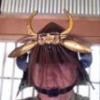
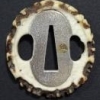

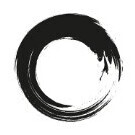





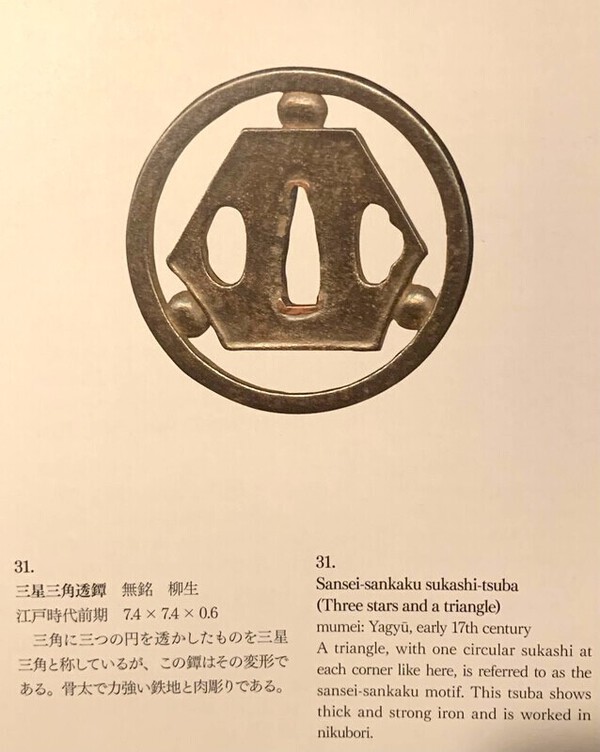










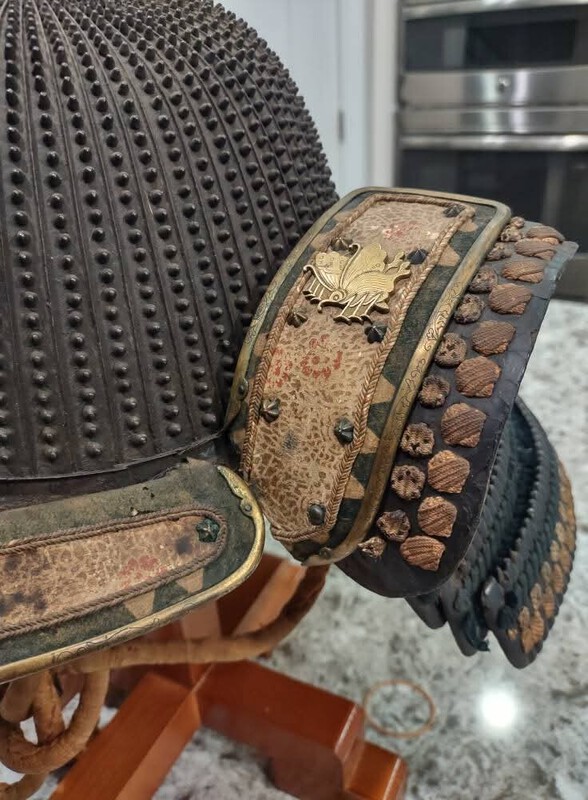









.thumb.jpg.8714263b1ffa6e54d51450f751a08a97.jpg)







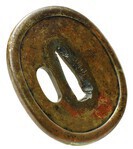










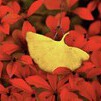

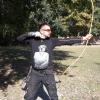









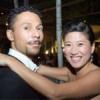







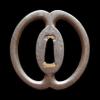








.thumb.png.4c5df79fec171b2dc4a23af38e280a4d.png)
